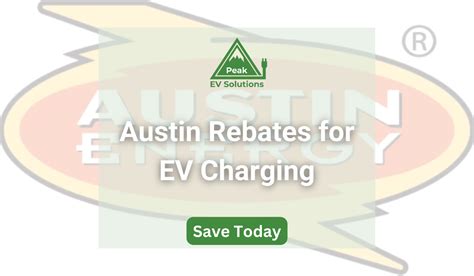As electric vehicles (EVs) become more popular, the need for accessible and efficient charging infrastructure is growing. Many governments and utility companies offer rebates and incentives to encourage the installation of EV chargers at home. These programs can significantly reduce the cost of installation, but navigating through the various options can be tricky. This article explores how to maximize your savings through rebates for EV charger installations.
Understanding EV Charger Installation Costs
The cost of installing an EV charger can vary widely based on several factors, including the type of charger you select, the electrical requirements of your home, and the complexity of the installation process. On average, homeowners can expect to pay anywhere from $500 to $2,500, depending on their circumstances. By taking advantage of available rebates, you can significantly lower these costs.
Types of Rebates and Incentives Available
Various types of rebates and incentives may be available for EV charger installations. Here are some common options:
- Federal Tax Credits: The federal government often provides tax credits for the purchase and installation of EV chargers. Check the IRS guidelines for the most current information.
- State Incentives: Many states offer their own rebate programs. These can include direct rebates, tax credits, or funding through specific programs aimed at reducing greenhouse gas emissions.
- Utility Company Rebates: Local utility companies frequently have programs in place to promote EV adoption. Rebates could vary from cash back after installation to discounts on electricity rates for charging during off-peak hours.
- Local Government Grants: Some cities and municipalities provide grants or rebates for installing EV chargers in residential areas, making it vital to check local government resources.
Researching Available Programs
Before choosing an installer, do thorough research to find all available rebate programs in your area. Here are steps to maximize your savings:
- Visit Websites: Government websites and utility company portals often provide detailed information regarding available rebates and incentives. Take the time to explore them thoroughly.
- Contact Local Authorities: Often, personal outreach can yield the most accurate and updated information. Call your local government or utility company for guidance on programs available to you.
- Check with EV Charger Manufacturers: Many EV charger manufacturers have partnerships with rebate programs. They can often provide insights or resources to help you understand the rebates you can receive.
Preparing for the Installation
Once you’ve identified the available rebate programs, the next step is preparation for installation. Here are some tips to follow:
- Choose the Right Charger: There are Level 1 and Level 2 chargers. If you are looking for more efficient charging, Level 2 chargers are recommended, despite having a higher initial cost.
- Get Multiple Quotes: Reach out to several installation contractors to get quotes. Compare services and ensure the contractor is knowledgeable about the rebate programs and can assist you in applying for them.
- Consider Additional Costs: Beyond the installation of the charger itself, consider any necessary electrical upgrades. A contractor can inform you whether your current electrical panel requires upgrades to support the new charger.
Applying for Rebates
Completing the rebate application process can seem daunting, but here are some steps to simplify it:
- Gather Required Documents: Make sure to gather all needed documents, including installation receipts, proof of payment, and any other documentation required by each program.
- Follow Submission Guidelines: Adhering strictly to submission guidelines is crucial. Incorrect or incomplete applications can delay the process or lead to rejection.
- Keep Track of Deadlines: Many rebate programs have deadlines for applications. Set reminders to ensure you don’t miss out on potential savings.
Conclusion
Installing an EV charger at home can be a significant investment, but through careful research and timely applications for available rebates, you can dramatically reduce the out-of-pocket costs. By understanding the various types of incentives and preparing adequately for the installation, you can make your transition to electric vehicles smoother and more cost-effective. Don’t miss out on these opportunities to charge up your savings while contributing to a cleaner environment.
FAQs
What is the average cost of EV charger installation?
The average cost can range from $500 to $2,500, depending on the type of charger, installation complexity, and local labor rates.
Are there federal tax credits available for EV charger installations?
Yes, various federal tax credits are available, but the specifics can change yearly. It’s best to check the IRS website for current information.
How can I find state-specific rebates?
You can visit your state’s official government website or contact local utility companies to learn about specific electric vehicle incentives.
Can I apply for multiple rebates?
Yes, in many cases, you can apply for both federal and state rebates, as well as utility company incentives, as long as you meet the program requirements.
Will my utility company notify me about available rebates?
While some utility companies may notify customers, it is advisable to proactively check their website or contact them for information on available programs.
Download Rebate For Ev Charger Install
